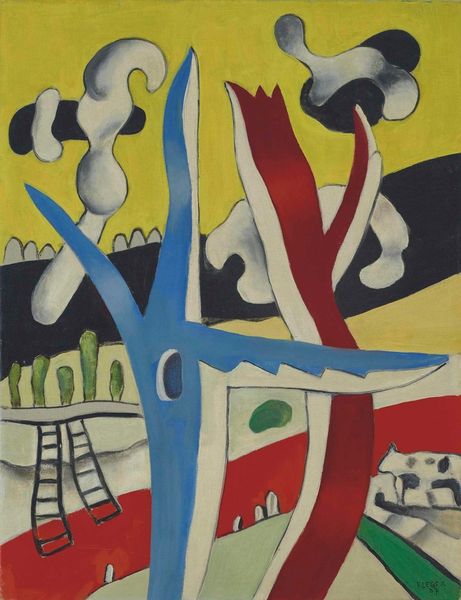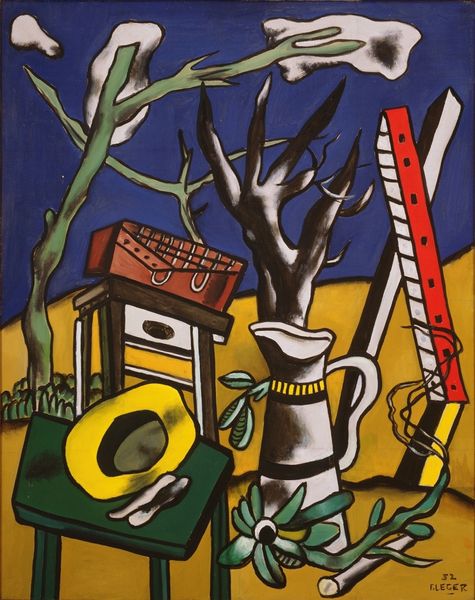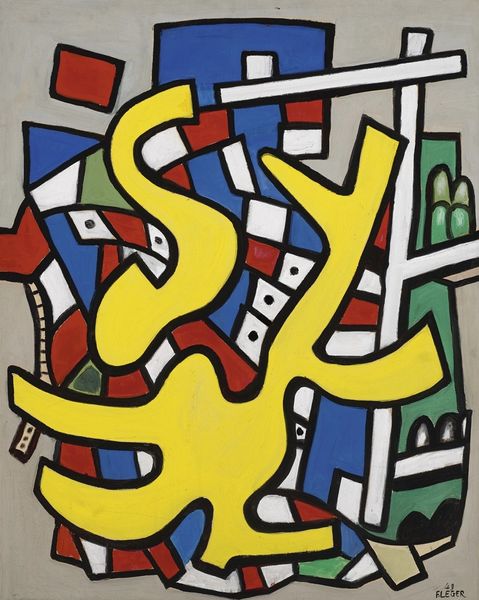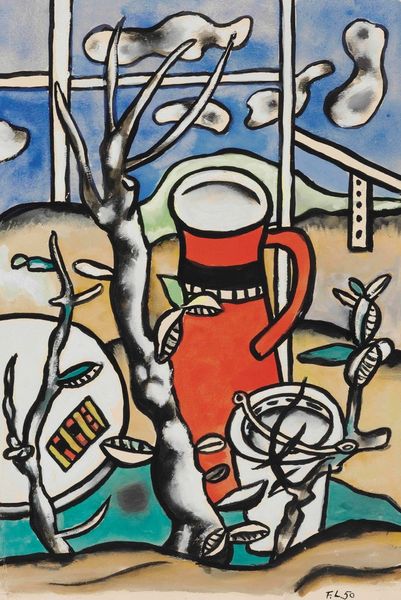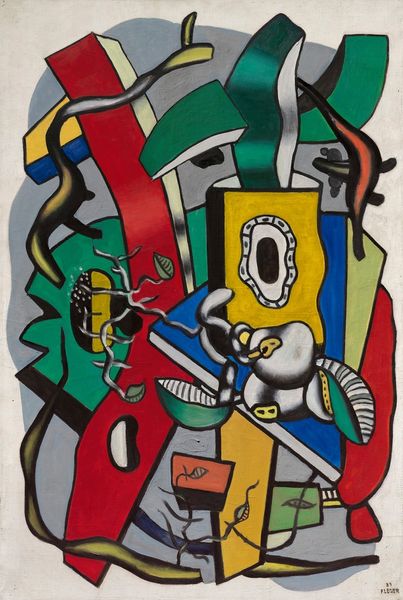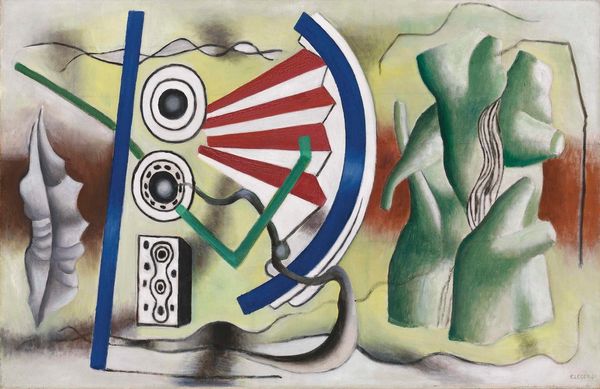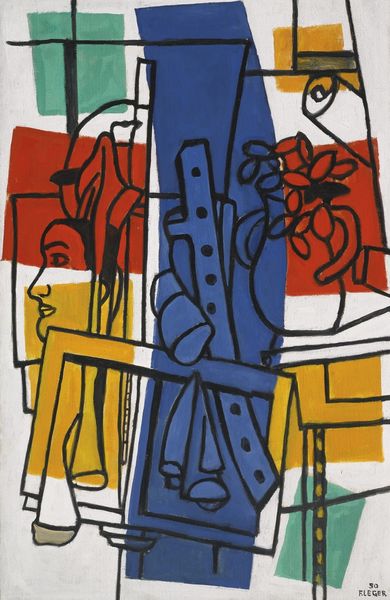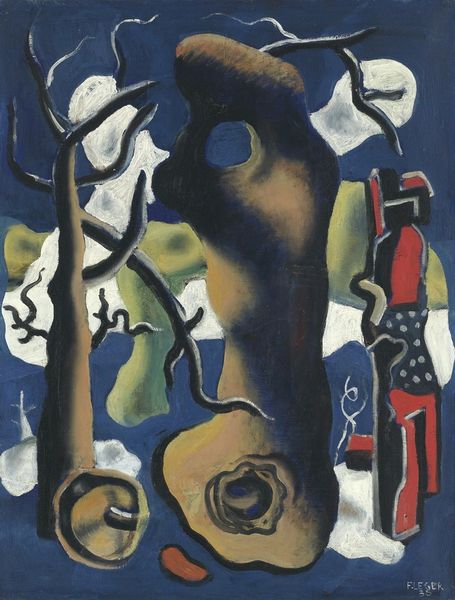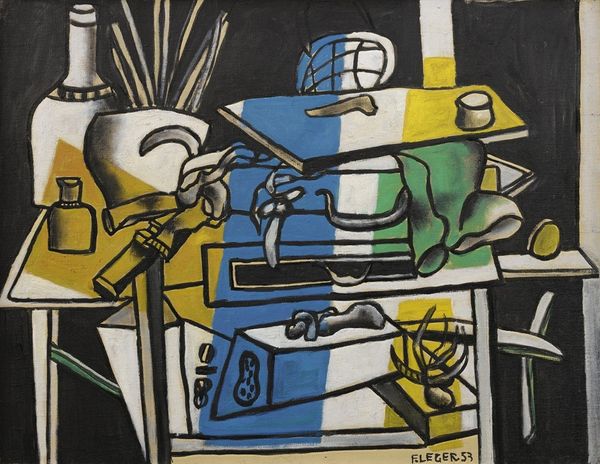
Copyright: Modern Artists: Artvee
Editor: We’re looking at Fernand Léger's "Une Figure dans un paysage," painted in 1949 using oil on canvas. The painting seems to pit industrial geometry against natural forms. I find the stark contrast between the foregrounded objects and the background incredibly striking. What’s your take on the overall composition here? Curator: Léger employs a flattened perspective, a hallmark of his engagement with Cubism, eschewing traditional depth for a direct, almost confrontational presentation. Note the sharp delineation of forms, how each element is rendered with equal clarity. Ask yourself: what does this visual treatment communicate? Editor: The use of primary colors really pops, particularly against the black outlines that seem to contain each object. Is that intentional? Curator: Precisely. Observe how Léger orchestrates these colors not for mimetic representation, but for their intrinsic values. He's less concerned with representing the *thing* itself, but exploring its essence through shape and hue. It pushes the limits of representation. Editor: I see what you mean. The chain, the trees... even the face are less about likeness and more about form. So it's the arrangement that generates meaning, not necessarily the objects themselves? Curator: Exactly! Léger is making an argument about seeing itself, inviting you to decipher the visual grammar he has constructed. Is he proposing a synthesis of the industrial and the organic, or highlighting their inherent conflict? Editor: That is really insightful. The colors become almost symbolic then. It makes me rethink how I engage with abstract art. Curator: Agreed. It’s about looking past the depicted subject and into the construction of the painting itself, an entry point to understanding how the artist is presenting an idea.
Comments
No comments
Be the first to comment and join the conversation on the ultimate creative platform.

